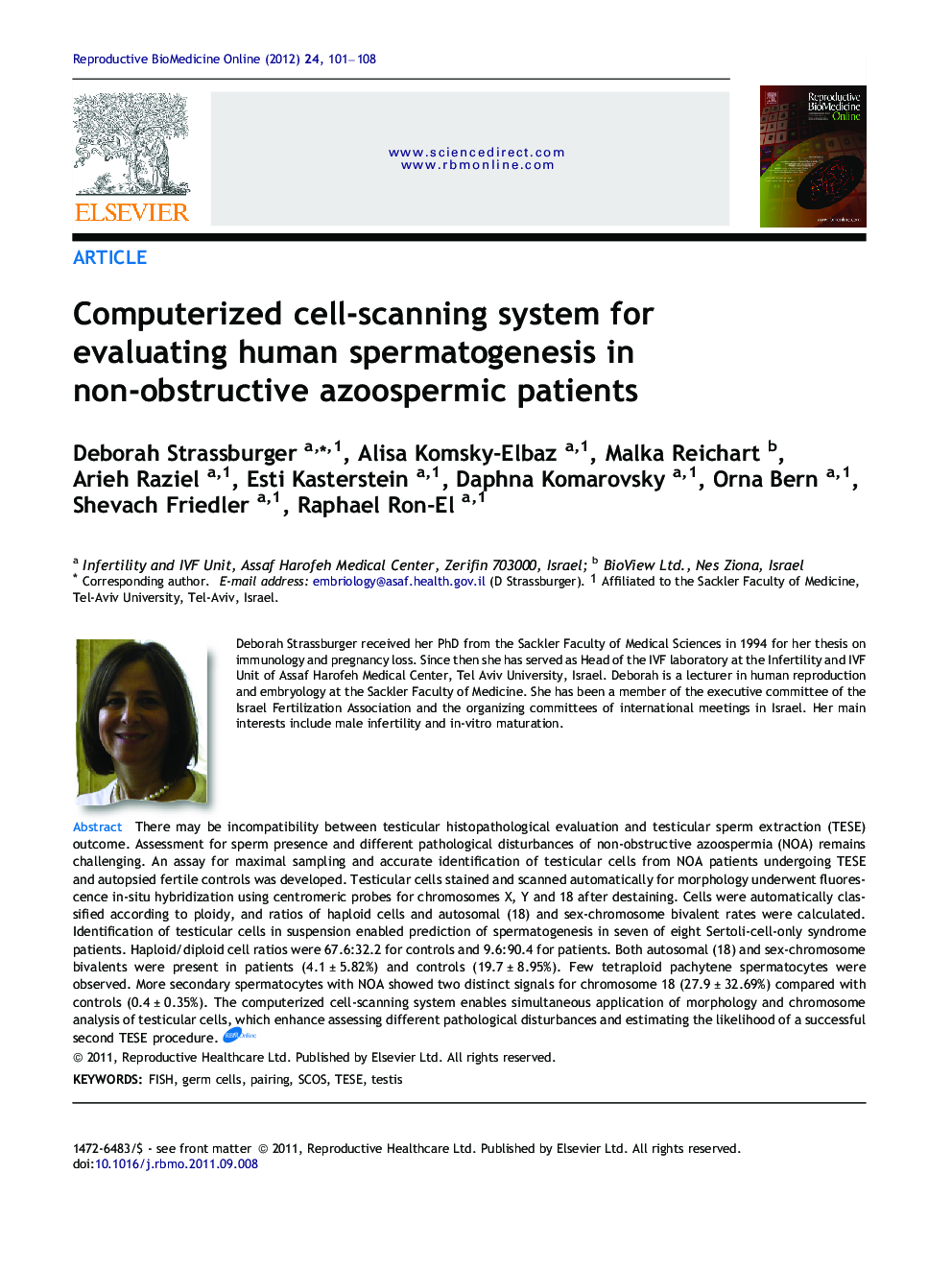| Article ID | Journal | Published Year | Pages | File Type |
|---|---|---|---|---|
| 3970628 | Reproductive BioMedicine Online | 2012 | 8 Pages |
There may be incompatibility between testicular histopathological evaluation and testicular sperm extraction (TESE) outcome. Assessment for sperm presence and different pathological disturbances of non-obstructive azoospermia (NOA) remains challenging. An assay for maximal sampling and accurate identification of testicular cells from NOA patients undergoing TESE and autopsied fertile controls was developed. Testicular cells stained and scanned automatically for morphology underwent fluorescence in-situ hybridization using centromeric probes for chromosomes X, Y and 18 after destaining. Cells were automatically classified according to ploidy, and ratios of haploid cells and autosomal (18) and sex-chromosome bivalent rates were calculated. Identification of testicular cells in suspension enabled prediction of spermatogenesis in seven of eight Sertoli-cell-only syndrome patients. Haploid/diploid cell ratios were 67.6:32.2 for controls and 9.6:90.4 for patients. Both autosomal (18) and sex-chromosome bivalents were present in patients (4.1 ± 5.82%) and controls (19.7 ± 8.95%). Few tetraploid pachytene spermatocytes were observed. More secondary spermatocytes with NOA showed two distinct signals for chromosome 18 (27.9 ± 32.69%) compared with controls (0.4 ± 0.35%). The computerized cell-scanning system enables simultaneous application of morphology and chromosome analysis of testicular cells, which enhance assessing different pathological disturbances and estimating the likelihood of a successful second TESE procedure.Assessment for sperm presence and different pathological disturbances of non-obstructive azoospermia (NOA) remains challenging. There may be incompatibility between testicular histopathological evaluation and testicular sperm extraction outcome. Precise identification of individual germ cells in a wet cell preparation during TESE could contribute to understanding the pathology. An assay for maximal sampling and accurate identification of testicular cells from NOA patients undergoing TESE was developed. A prospective cohort study was conducted at a university-based IVF centre. Cells from the testicular suspension of 12 NOA patients and three autopsied fertile controls were fixed on glass slides using a Cytospin centrifuge and stained with May–Grünwald Giemsa. The slides were automatically scanned for cell morphology. Fluorescence in-situ hybridization using centromeric probes for chromosomes X, Y and 18 was performed after destaining, and cells were automatically classified according to ploidy. Identification of different testicular cells in the suspension enabled prediction of spermatogenesis in seven out of eight Sertoli-cell-only syndrome patients. Ratios of haploid to diploid cells were 67.6:32.2 in the controls and 9.6:90.4 in the study group. Presence of both autosomal (18) and sex chromosome bivalents was 19.7 ± 8.95% in the controls and 4.1 ± 5.82% in the study group (P < 0.05). Some tetraploid pachytene spermatocytes were identified in both groups. More secondary spermatocytes in the study group showed two distinct signals for chromosome 18 than in controls: 27.9 ± 32.69% versus 0.4 ± 0.35 (P < 0.02). Thus, computerized cell scanning enables simultaneous application of morphology and chromosomal analysis of testicular cells and examination of meiotic pairing for enhanced assessment of pathological disturbances.
